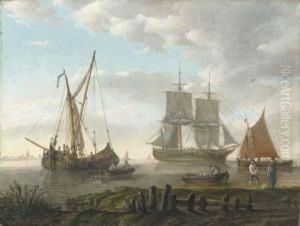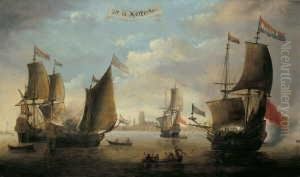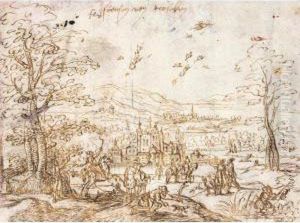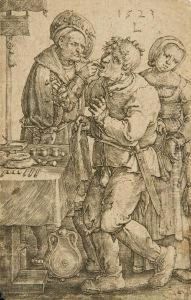Jan Van Leyden Paintings
Jan van Leyden, also known as Jan Beukelszoon or John of Leiden, was a notable figure in European history, particularly within the context of the Radical Reformation in the 16th century. Born in Leiden, the Netherlands, in 1509, his early life was marked by his training as a tailor, a trade through which he traveled extensively. His journeys exposed him to the burgeoning ideas of the Reformation, which were beginning to challenge the established Catholic Church's authority across Europe. Van Leyden became an ardent follower of Melchior Hoffman, an influential Anabaptist leader who preached the imminent return of Christ and the establishment of a New Jerusalem.
Van Leyden's zeal and charisma quickly elevated him within the Anabaptist movement, particularly in the city of Münster, Germany. In 1534, Münster became a focal point for radical Anabaptists, who seized control of the city, declaring it the New Jerusalem. Van Leyden was a leading figure in this takeover, eventually proclaiming himself the King of New Jerusalem. Under his rule, Münster attempted to establish a communal theocracy, redistributing wealth and property among its inhabitants and enforcing strict adherence to Anabaptist beliefs. This radical experiment attracted fierce opposition from both secular and religious authorities.
The siege of Münster by the prince-bishop Franz von Waldeck, which lasted over a year, ultimately led to the city's fall in 1535. Jan van Leyden was captured, tortured, and executed in January 1536. His death marked a significant moment in the Anabaptist movement, serving as a warning against radical religious reform. Despite his controversial legacy, van Leyden's life and the Münster Rebellion have been subjects of fascination and study, symbolizing the extreme potentials of religious fervor and the challenges of establishing utopian societies. His story is a testimony to the turbulent times of the Reformation and the complex interplay of religion, politics, and society in 16th-century Europe.



